1. INTRODUCTION TO SOCIAL FARM MANAGEMENT
The Social Agriculture has its roots in the values of solidarity and community of the rural world and in the natural environment, and it is multifunctional, combining the traditional food production function with the ability to favour the rehabilitation of persons with mental and social disorders (Van der Ploeg J., 2003, Pascale A., 2009).
This historical reference has been developed as a theoretical framework generally called Green Care defined as an active process that is intended to improve or promote physical and mental health and well-being not purely a passive experience in a natural environment. (Nilsson K., Baines C. and Konijnendijk C., 2007)
Starting from these concepts the Social Farm Management has been developed as a specific theoretical and practical framework of knowledge, competences, skills and abilities for professional farmers specialised in this kind of activity and therapy rehabilitation paths targeted to vulnerable persons with special needs and involving social-health services, local communities, employment offices and families.
As a professional category the Social Farm Manager is therefore an entrepreneur with high level knowledge in the field of rehabilitative paths for persons with mental disabilities and social troubles through work integration within farm environments adapted to this scope.
The Social Farm Management has many different dimension and elements that address the varied needs of different persons under their personal and tailored rehabilitation path: for example, two of them participating in the same activities may benefit in different ways.
There is a need, therefore, to describe the processes involved in order to define the intervention to show how the different dimensions and processes are related and to what extent the different approaches within the Green Care context are interconnected.
This theoretical and preliminary approach will be shared and discussed with persons responsible for Health and Social Services so that the Social Farm Manager can adapt the care farm program to the different subjects according to the recommendations of the psychiatrists and psychologists sending the
persons in placement, explaining the program to the parents and organize the daily agenda together with the Social Farm Tutor.
The Social Farm Manager (SFM) can be defined as the person responsible for planning and managing the program of farm activities targeted to persons with special needs in cooperation with the Social and Health Services.
He or she, as an entrepreneur if owner or as a manager, in case of employee managing this task on behalf of the farm owner, will undertake all initiatives making the farm suitable to welcome, train and start up to work vulnerable persons within a rehabilitation path.
Under this respect the SFM can be considered, in terms of competence, as a provider of inclusive on farm training courses and placements targeted to vulnerable persons with different kinds of mental, social or behaviour disorders.
As a social entrepreneur he or she will be skilled not just for managing farm activities planned and adapted to persons with different kinds of mental disability but are also able to motivate the Social Farm Tutor (SFT) and create an atmosphere of empathy in carrying out the care farm program for trainees starting from their inclusion and integration skills (Soft Skills) and improving their daily learning-by-doing field experiences (Hard Skills).
The Social Farm Manager will be responsible for:
- adapting the farm environment to host persons with special needs;
- planning the social farm activities;
- managing, mentoring and training internal human resources;
- running relationships with social cooperatives, parents’ associations and individual families;
- carrying on relationships with employment, social and health services;
- participating to social farming networks.
2. ADAPTING A FARM TO SOCIAL AGRICULTURE
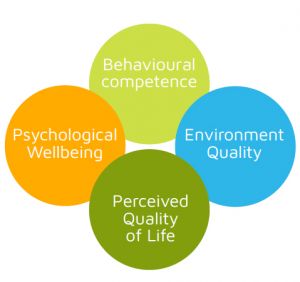 A theoretical background to start thinking on adaptation of the social farm to persons with special needs is necessarily linked to a knowledge on Quality of Life (QoL) models.
A theoretical background to start thinking on adaptation of the social farm to persons with special needs is necessarily linked to a knowledge on Quality of Life (QoL) models.
In the social sciences, QoL refers to material well-being and people’s feelings about the adequacy of their lifestyle. In the medical sciences, QoL refers to the Health-Related Quality of Life (HRQoL) in which attributes of health status and life quality factors are emphasized and interconnected (Lawton M. P.,1983).
The QoL is high when the hopes and expectations of one’s ability to function match the perceived situation (McDowell I., 2006).
QoL Models can be used to assist resource allocation and to assess the impact of policy decisions (Rogerson R., 1995).
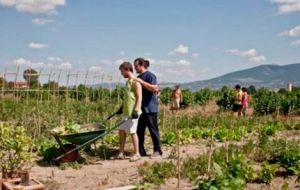 In health care QoL is an outcome measure used in evaluating treatment outcomes mainly from a patient perspective, so distinguishing the program effects depending on different persons with results that can be compared by measuring their QoL also in case of adverse effects.
In health care QoL is an outcome measure used in evaluating treatment outcomes mainly from a patient perspective, so distinguishing the program effects depending on different persons with results that can be compared by measuring their QoL also in case of adverse effects.
The social farm adaptation plan will include all implementation and changes needed to transform a conventional farm into a place accessible to persons with mental and social gaps and comfortable for their work and leisure time.
Fields, open spaces, buildings and facilities should be analytically revised according to the principles of design for all based on accessibility, inspired to the experiences of ENAT (https://www.accessibletourism.org/) and adapted to be comfortable for persons with special needs and favourable to their work integration.
All planned care farm activities will be based obviously on seasonal works and weather conditions so that the planning can also be slightly varied in terms of postponement of some outdoor activities substituted by indoor activities but always following a program targeted to each trainee.
Combined with full attention to improvement of soft skills, such as mutual confidence and good relations, the individual care farm planning has to empower also hard skills based on work-shadowing with a social farm tutor and accomplishment of assigned tasks.
A general QoL scheme of farm adaptation can be designed starting from the key factors to be known before beginning the placement and the related individual program. The main factors to be analysed are focused on kinds of unease (mental, behaviour or social disorders), soft skills assessments, interests and potential talents of the trainee with special needs and individual program sharing with the family. This phase will be managed together with the health and social services and will bring to an individual report of Characteristics, training and placement program and a placement road map including task analysis, ongoing observation of the daily program and reports. The results will be shared, analysed and discussed with the social health services and the family.
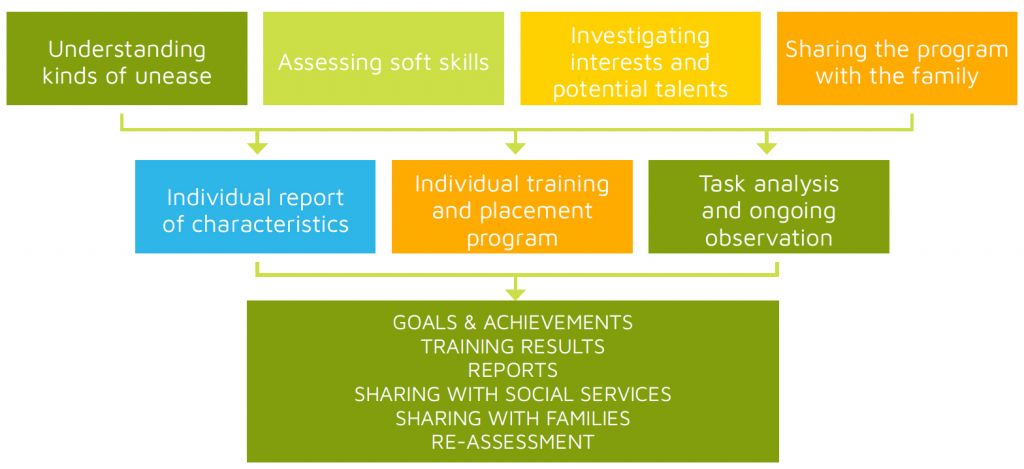
Social farming is intended as a specific occupational and leisure therapy in a green context supporting the attitudes of trainees with different kinds of impairments and favoring their evolution towards satisfying and productive lives not strictly dominated by their work performances but combining their job activities with wellbeing.
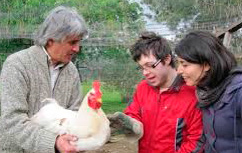 A person’s daily occupation can be limited as a result of health problems such as a mental illness, an oppressive work environment or social life difficulties, as in the person-environment-occupationperformance (PEOP) model (Christiansen L. et al, 2005).
A person’s daily occupation can be limited as a result of health problems such as a mental illness, an oppressive work environment or social life difficulties, as in the person-environment-occupationperformance (PEOP) model (Christiansen L. et al, 2005).
The ex-ante analysis of the key factors, as a preliminary activity to be performed by the social farm manager in collaboration with the health and social services, leads to an in-depth knowledge of the kinds of impairments to be tackled and constituting therefore the reference framework for the individual program coping with kinds of distress that can be foreseen and overcome.
The farm adaptation, that will be in general based on unstressed work and leisure environments, in terms of individual programs will be focused on facing the specific kinds of impairments that can obstacle a sound placement.
The background knowledge and awareness on kinds of impairment needed by the Social Farm Manager highlights the importance of connecting the ex-ante evaluation with the individual program adapting training and work environment to the characteristics and cognitive status of the trainee.
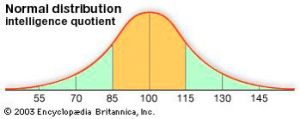 Cognitive disorders are a category of mental health disorders that primarily affect cognitive abilities including learning, memory, perception, and problem solving. Developmental cognitive disorders or Learning disabilities are commonly divided into ‘mild’, ‘moderate’, ‘severe’ and ‘profound’, and these categories are based on Intelligence Quotient (IQ).
Cognitive disorders are a category of mental health disorders that primarily affect cognitive abilities including learning, memory, perception, and problem solving. Developmental cognitive disorders or Learning disabilities are commonly divided into ‘mild’, ‘moderate’, ‘severe’ and ‘profound’, and these categories are based on Intelligence Quotient (IQ).
Mild and moderate learning disabilities are often defined as an IQ between 35 and 69 and severe learning disabilities as an IQ of 34 or below with impairment of adaptive functioning with onset in childhood.
Starting from the IQ evaluation, all kinds of impairments are analyzed in depth by the health and social services and a Social Farm Educator (SFE) will accompany the trainee to be placed and trained since the beginning up to the complete adaptation of the subject to the place and work activities. These specific function and tasks will be described within the Module 3 of this course.
Starting from the ex-ante evaluation on kinds of impairments of the trainee the Social Farm Manager will adapt the various workplaces and laboratories to the individual program that will be shared with the health and social services.
The individual program will be inspired to a vision based on social inclusion, integration and rehabilitation of vulnerable persons with the objective to set up a workplan adapted to the specific characteristics, such as kinds of mental disabilities or social troubles, interests and emerging talents of the trainee, with a tailored training and placement design that will be performed day-byday in work shadowing by the social farm tutor.
Task of the Social Farm Manager will be therefore, after the adaptation plan, also a coordination of the daily activities to be performed by the trainees with the support of the social farm tutor and possible small changes based on ongoing evaluation of results.
The social farm will be adapted in the best way that can make it a comfortable, accessible and safe place to host training and work activities of vulnerable persons, each of them placed and followed up along their own tailored individual program.
A preliminary attention will be paid to outdoor spaces in the social farm placement and work sectors with a specific check for preclusion to poisonous, thorny and common plants causing danger and allergic reactions, and dense vegetation which may obstruct movement and visual exploration.
Same carefulness is necessary in the rooms where work and rest time will be spent by the trainees with special needs to avoid them any kind of stress, lack of comfort or risk for their safety.
In addition to these practical issues to be examined and solved, participants must also feel welcome, safe and at ease, in a culturally sensitive, natural and comfortable environment.
Physical, cognitive and social accessibility are all particularly important for social farms where greenspaces are targeted for use by vulnerable people and adapted depending on their specific impairments.
The psycho-educational rehabilitation aims to teach skills and abilities that influence the cognitive aspects. A well adapted social farm takes into consideration not just the limits but also the advantages from stimulating autonomy and independent growth of the trainee.
Each planned activity should be measurable against the abilities acquired in carrying out specific tasks or learning from work and leisure time activities, functional communication and interpersonal communication. This implies that all hard and soft skills learnt by the trainee from the performed activities should be available, suitable and repeatable for following same or similar tasks and relationship contexts.
The role of the Social Farm Manager will be therefore not limited to the farm adaptation and organization of the individual programs for the trainees but also consisting in the follow up of the activities managed by the Social Farm Tutor and making possible changes in the program according to an ongoing assessment process performed in cooperation with the Social Farm Educator and the health and social services.
The SWANS project created a feasible job placement model for autistic persons with various degrees of socialization problems and different skills and abilities, thus contributing to monitoring evaluation tools, operational difficulties connected with work contexts, and support and tutoring methods for overcoming such obstacles (Canalicchio M., De Clercq H., Howlin P., Montagnoli L., Peeters T., Pierini A., et al., 2013).
The SocialFARMS project aims to demonstrate that the model and management tools created for persons with autistic spectrum disorders (ASD) can be transferred to other categories of persons with various kinds of mental, social and behavioral disorders and specifically developed within social farm contexts as ideal locations for rehabilitative placement and training by the triad Social Farm Manager, Tutor and Educator.
The Individual Therapeutic Rehabilitation Project (ITRP) places the person at the centre and it is elaborated within a multidisciplinary team with complementary roles and competences starting from the ex-ante evaluation on kinds of impairments and abilities of persons with special needs to be placed and trained, making them more autonomous, social and skilled.
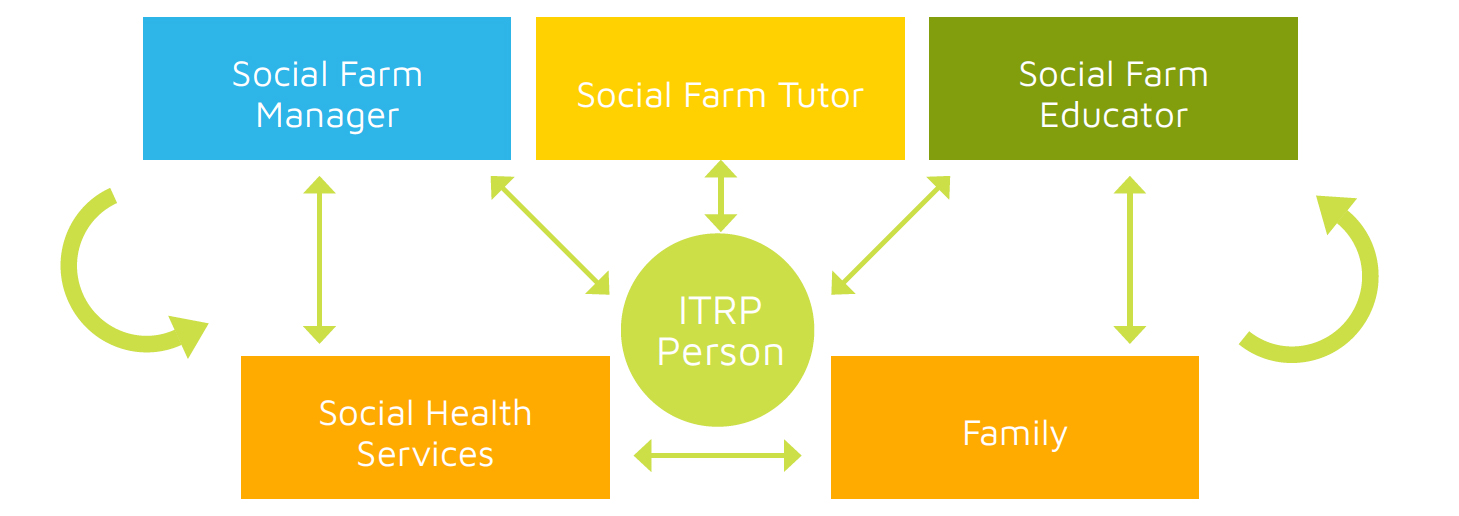
Accessibility is a factor of person-environment fit and refers to the degree to which people with different abilities can access the environment.
We can refer to different kinds of abilities, intended as attitudes, capabilities, skills or talents but we can more in general define them as practical or theoretical, both connected to cognitive abilities referring to the environment in which the information needed to think and act is understandable to the users, involving interconnected social and vocational abilities giving access to knowledge and work.
The chart-flow here below shows the connections bringing to vocational needs and employability passing through the social farm inclusion and rehabilitation programs.

3. PLANNING SOCIAL AGRICULTURE
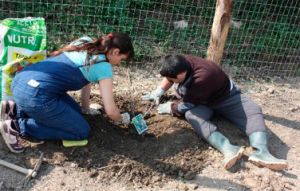 Farmhouses and their surrounding arable land and greenhouses can become a perfect place to be adapted for placement of persons with different kinds of impairments.
Farmhouses and their surrounding arable land and greenhouses can become a perfect place to be adapted for placement of persons with different kinds of impairments.
Courtyard animals can offer the opportunity to engage persons with mental and social troubles in their care and management.
It is not necessary in most cases to change radically the productive assets but just arrange feasible work paths to host adequately trainees with special needs and adapt the daily work to their characteristics and behaviors.
Open fields can be limited within small plots of land where labor and training activities can give day-by-day the evidence of the work done and the results shared between the tutor and the trainee or within a group.
Kitchen gardens, small production of vegetables and aromatic herbs are very useful for this kind of individual and group therapeutic approach because they can be very practically managed and worked out by the tutor in collaboration with one ore more trainees.
Planning a social farm production addressed to the solidarity and community supported market, farmers’ markets or general retail market, is obviously more ambitious than produce for internal consumption as a therapeutic individual or group path because it means to face the market and sell to consumers food products under a social farm brand and, in case of organic production to get the related certification.
This approach should be therefore considered as an opportunity for the employment of persons with impairments hosted in the social farms and headed towards an economic work activity, including therefore in the aims of the cooperative also the final scope of the employment.
This implies the choice of the legal configuration for the social farm, such as a social cooperative involving the persons with the various kinds of impairments as members and workers.
There are different legislations in the European Union defining different kinds of social cooperatives (see the SocialFARMS State-of-the-Art from Austria, Italy, the Netherlands, Spain and Turkey).
A general overview of the farm should be provided to demonstrate the potential offer, the practical field and lab work paths starting from the presentation on a nutshell of all available facilities and services.
More in details how the social farm works should be presented: crops and animals are the centre of agricultural activities, so the way to present their availability and adaptation going through the person centred rehabilitative path is a key approach for the Social Farm Manager.
Social farming is commonly associated to organic or integrated agriculture: the vision on kinds of farm process and products can integrate therefore the mission stated as a social farm with a specific focus on the way in which trainees with special needs are directly and safely involved in the farm activities.
This education and training approach is called learning-by-doing and it is based on a well done design that will be performed by a Social Farm Tutor with one or more trainees, accompanied in the first period of placement by a Social Farm Educator (see Module 3), sent by the social health services or by a social cooperative, in charge of favouring the inclusion at work of the person to be trained.
Starting from considering social agriculture as a form of social entrepreneurship, it is important to understand that a social farm should combine a Business Model (BM) focused on solutions for a social environment combined with a Business Plan (PB) focused on an economic environment.
The social and economic approach is therefore fundamental to make sustainable a sound combination between the primary activity and the social farm activity, by editing, reviewing and updating a business plan as a fundamental step in the process of converting a traditional farm into a social farm.
This specific approach shows similarities and differences between a classic economic and a social farm business plan combined with a business model.
It is therefore important to highlights the peculiarities of a farm business plan oriented to social agriculture.
An in-depth knowledge of the internal, external and institutional factors is required to set-up and manage a social farm, as in the scheme below.
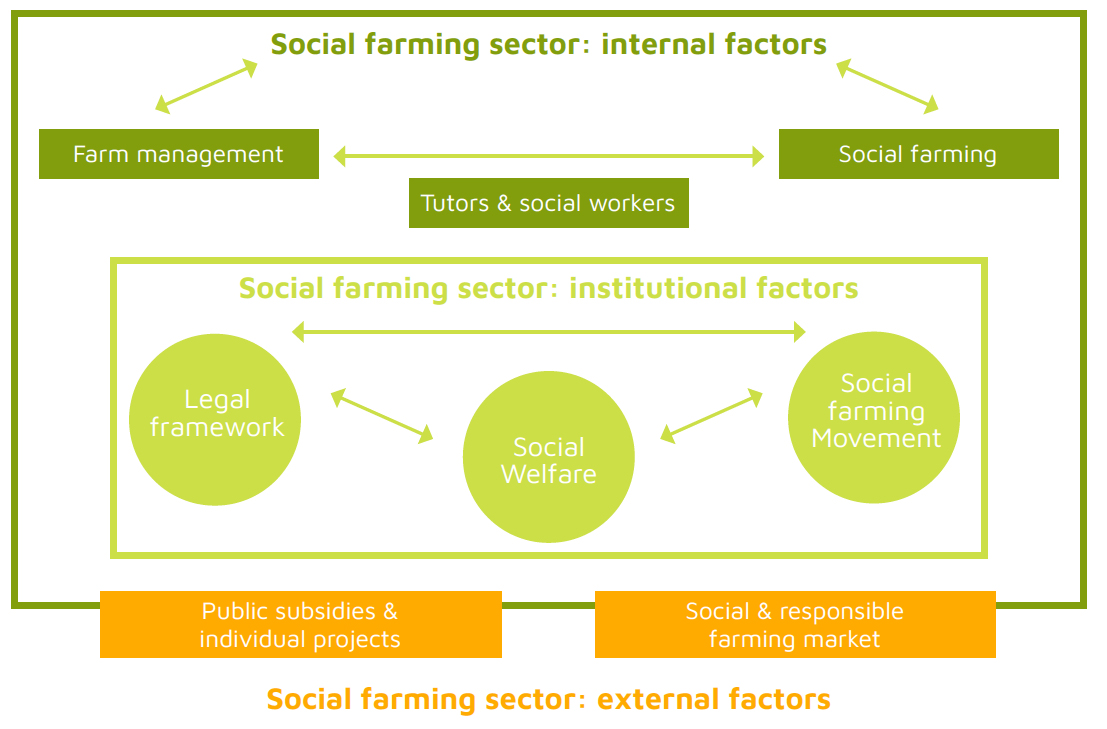
Business canvas model for social farms
(modified from L’Agricoltura si eleva al quadrato,2018 ed. Ali&no, B.Torquati, A. Tittarelli, V.Vizioli, C.Paffarini)

A decision tree is commonly considered a good approach to start a social farm business and analyse in depth its feasibility

The business plan of a social farm does not differ so much from a business plan of a traditional farm, or generally speaking, from that of a small company. However an important part is depending on changes made or needed to adapt the farm to guests and trainees with special needs.
The main difference between a farm and a care farm is that, in the second case, the Social Farm Manager is engaged in social welfare rather than pure economic profitability.
Another difference to consider is that there may be additional costs due to specific needs corresponding to kinds of mental and social troubles to be tackled (these differences will be presented in Module 3).
On the other hand an added value can be represented by the ethic role recognized to the social farm, with corresponding subsidies and support from the social health services and local public institutions and preference given from citizens and consumers to the fair trade products and community supported initiatives , with the opportunity to transform a disadvantage into a competitive advantage.
Scope & Budget: define clearly what will be the overall scope of your social farm project (i.e.: rationale, objectives, deliverables, financial sources, budget). Keep in mind that the different elements of the scope assesment may be adjusted during the project development.
Work Breakdown Schedule: create a graphic representation that can help you to break down the project scope in different sections and tasks (i.e.:use a canvas model).
Gantt Chart: define a timeline representing in cronological order the different steps and tasks of the project.
Communication Plan: this should be kept especially in mind for external relationships and involvement of external stakeholders in your social farm project.
Risk Management: identify the potential risks of the project, cathegorise them according to their probabilty and severity and try to define action to prevent the risks and/or mitigate their effects.

After having carefully examined the location, land and premises to be bought, rent and built, or adapted, if family property, it is very important to fix vision, ideas and aims with concrete figures corresponding to own budget. To plan correctly a business plan for a social farm it is useful to prepare a planning tool including:
- budget for i) purchase (land and/or premises), ii) construction, adaptation or refurbishment, iii) lighting, heating, air conditioning and plumbing system, iv) other equipments, v) farmhouse facilities (kitchen, equipped living rooms,..), vi) gardens and parks, vii) other outdoor facilities, etc…
- expenditures for i) fixed costs (taxes and fees, staff costs for the active season, based on data for type of personnel and average salaries and social payments, with prevision for increasing costs in the period of the following two or tree years; ii) fixed part of the expenses for electricity, water, phone and internet services; iii) advertisement costs for the first year of exploitation, as well as for supporting advertisement during the following years.
- expenditures for : estimated variable costs for the business, calculated as percentage of the revenue from the selling of social farm products and services.
Main financial factors of a business plan for a social farm:
- Basic capital and funding to be invested for restoration and adaptation;
- loan capital needed for investment/exploitation of the social farm business;
- sources of funding, also including European funds, loan repayment, etc.
Basic budget of the social farm business:
a) estimated annual revenue, price for one day accommodation with (or without) food, average price of the complementary services package; expected occupancy rate; expected increase of customers for a period of 2–3 years after the beginning;
b) estimated fixed costs per year, taxes and fees, staff costs for the active season, fixed part of the expenses for electricity, water and phone/internet services; advertisement costs;
c) estimated variable costs for the business, calculated as percentage of the revenue: i) electricity and water, ~10 % of the revenue from selling social farm accommodation and food services, ii) expenses for food products and other products needed for the kitchen,~30% of the revenue from food services for the customers, iii) other variable costs, for hygienic materials, cleaning and washing consumables, and other materials, ~5 % of the accommodation revenue. All this figures can be put in a matrix.

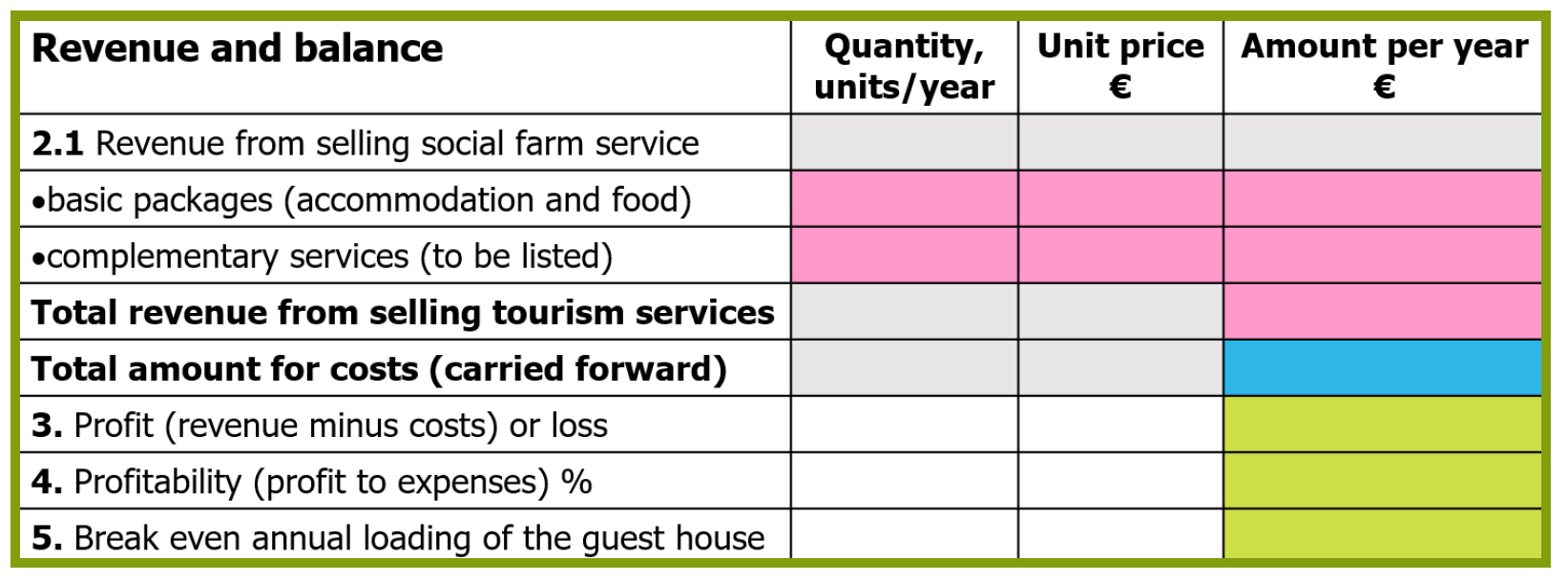
Starting from this basic application a specific business plan of a social farm focuses on kinds of internal, institutional and external factors regulating this sector.
Due to this specificity a Business Canvas Model can be an effective tool to design a detailed business plan including relationships and specific factors to be examined.
The Social/Health Services (SHS) are responsible for the public health and specific services managed by Psychiatrists and Psychologists are therefore in charge of persons with different kinds of mental, social or behavioural disorders who can be included in Individual Therapeutic Rehabilitation Projects (ITRP) based on Individual Placement and Support (IPS) and sent to a social farm presenting facilites and services reliable and well adapted to specific kinds of needs.
Some requirements relevant to the realization of the ITRP will be checked and evaluated during the placement based on the reports from the SFT and the SFE in collaboration between the SFM and the SHS.
The ongoing evaluation verifies since the beginning the inclusive path starting from the persons in charge of the day-by-day rehabilitation, the daily and weekly report on the work done, observations and comments, the regular assessment by the SHS and the communication to the families on the ongoing results.
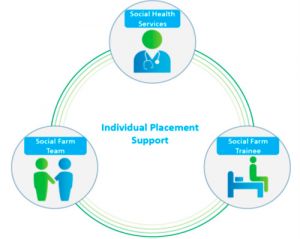 The Individual Placement Support (IPS) is based on a methodology of learning by doing that has to demonstrate and will be assessed by the SHS according to the social farm planning following the guidelines of the ITRP.
The Individual Placement Support (IPS) is based on a methodology of learning by doing that has to demonstrate and will be assessed by the SHS according to the social farm planning following the guidelines of the ITRP.
The inclusion path at work will be supervised by the SFE whose main task is aimed to facilitate the rehabilitation path, the adaptability and selfconfidence of the trainee with special needs.
This support is fundamental in the first phase of the placement and the SFM will have various briefing with the SHS with the participation of the SFE who will be in charge to accompany the trainee.
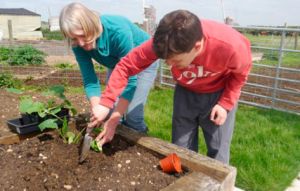 The SFM will share and deal the planned individual placement corresponding to the ITRP presented by the SHS.
The SFM will share and deal the planned individual placement corresponding to the ITRP presented by the SHS.
A portfolio made of brocures, pictures and movies will be useful to demonstrate the level of adaptation to the various features more suitable to include a specific person (all details on the activities and kinds of evaluation are provided in Module 3)
It is highly recommended, due to importance for vulnerable persons to be assisted by a known person for a continous and long time, that the Social Farm Tutor (SFT) assigned to a specific person or a small group to be trained for performing personalized farm programs, is an inhouse human resource, part or full time, depending on kind of engagement or contract.
The tutor’s role could be also performed directly, at the beginning of the social farm, by the farm manager, particularly in small farms, by organizing activities for persons with special needs, involving educators sent by socialhealth services or social cooperatives (see Module 3).
 In case of unavailability of an inhouse resource, the SFT could be a professional contracted in outsourcing, with a previous social farming experience. In this case he or she will organize the social farm activities planned in collaboration with the Social Farm Manager for a period long and continuous enough to make the trainees confident and comfortable vs the social farm environment and able to complete a whole cycle of activities.
In case of unavailability of an inhouse resource, the SFT could be a professional contracted in outsourcing, with a previous social farming experience. In this case he or she will organize the social farm activities planned in collaboration with the Social Farm Manager for a period long and continuous enough to make the trainees confident and comfortable vs the social farm environment and able to complete a whole cycle of activities.
In case other persons working at farm with different productive tasks are also involved in social farming activities they have to be trained to tutoring persons with impairments and acquiring the soft skills needed to have positive, pleasant and friendly relationships with them. The role of the Social Farm Manager in this case will be focused on supervising the social farm activities directly or in close relation with a social-health educator accompanying the trainee.
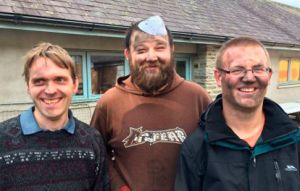 The abilities of the social farm manager are based both on entrepreneurial skills, managing and supervising the planned individual or group social farm activities, and soft skills focused on communication with the staff directly involved in training, such as the social farm tutor, and the educator sent by the social/health services supporting the person to be integrated.
The abilities of the social farm manager are based both on entrepreneurial skills, managing and supervising the planned individual or group social farm activities, and soft skills focused on communication with the staff directly involved in training, such as the social farm tutor, and the educator sent by the social/health services supporting the person to be integrated.
In case the social farm tutor is an internal human resource, he or she will be trained by the social farm manager or by external training centres providing a specialistic social farming course.
It’s important that the social farm is like a happy family with a common, solidal and proud sense of living work and leisure time as a one.
A social farm planning is based on a large experience made of field and relationships work. Field activities for social farming rehabilitation come from correct and effective collaboration with all persons and institutions involved.
A scheme can be useful to fix an idea of organizations and persons involved before creating a plan of field activities for a social farm program offer.
Social Health Services provide: treatments, therapies and individual projects; involve: social services and mental health teams specialized on rehabilitation of persons with various disabilities or social troubles.
NGO Organizations provide: social inclusion, community integration, soft skills empowerment, linguistic support; involve: social, drug and alcohol rehabilitation operators, refugee supporting cooperators.
Education and Training Organizations provide: supported school courses, non formal education, work environment and facilities for special needs; involve: schools, training centres, social cooperatives, families.
Employment Services provide: supported inclusion at work, farming skills; involve: employment services, rehabilitation bodies, sheltered employment schemes.
The Social Farm Manager, having a draft planning of field and lab activities targeted to persons with special needs, gets in contact with bodies and persons known or potentially involved, that can be schematically resumed as below:
- social cooperatives, existing in all European countries under different national laws, have a recognized status to provide services to persons with different kinds of mental or social disorders and direct relationships with local social and health services and families, providing them with assistance and work directly or in collaboration with authorized centres, shelters and care farms.
- parents’ associations, grown all over Europe, are either in connection with charity organizations, or independent and focused on specific kinds of disabilities or problems, sometimes supported by foundations providing them with financial resources and consultancy services.
- families are often proactive and organize directly or look for dedicated individual services, social inclusion spaces and training/work opportunities under advice of social and health services.
All these contacts are fundamental to share and test proposals of social farming and have a practical customer approach as connected drops in a water friendly environment.
After the adaptation of the farm to different kinds of disabilities, starting from target groups with special needs, it is necessary to make efforts to create inclusive social farm paths tailored to the characteristics of the participants.
This task will be a competence of the Social Farm Manager (SFM) starting from the Individual Therapeutic Rehabilitation Projects (ITRP) based on Individual Placement and Support (IPS) agreed with the Social/Health Services (SHS) and shared with the family of the trainee.
The SFM will plan the individual rehabilitation path in collaboration with the Social Farm Tutor (SFT) and Educator (SFE) for each individual placement fixing tasks and objectives distributed within weekly and daily activities and performed through adapted field and lab social farm programs.
Social farming is an effective and innovative approach to enhance social inclusion of persons with different kinds of impairment or marginalized condition, but the farm environment should be adapted for a sound rehabilitation.
Creating inclusive social farm paths is a key task of the SFM through the organization of field and social lab programs tailored to the trainees.
4. FIELD AND LAB SOCIAL FARM PROGRAMS
Social agriculture has been developed throughout Europe according to national and regional laws or rules, inspired to different theoretical models and practical experiences depending on countries, but with similar approaches.
Starting from this background, it is possible to collect from national experiences essential schemes of field and lab social farm programs, constituting a useful portfolio of evidence for the work of the Social Farm Manager.
The common aspects of social agriculture in Europe depend on the social demand for assistance, rehabilitation and care, intended as public goods that can be undersupplied by the agricultural multifunctional farm system.
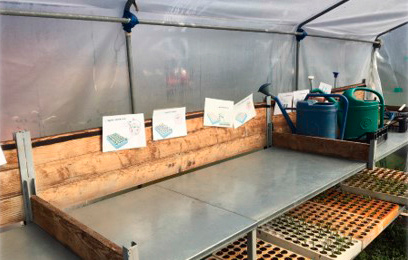
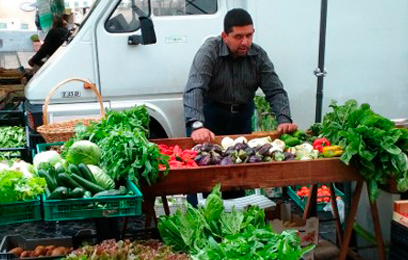
As an area of multifunctional agriculture, social farming provides the society with social public goods an enlargement of care and rehabilitation spaces out of traditional hospitals and shelters within a green community dimension.
All together the field and lab social farm programs can be considered a notable and innovative part of the efforts made since the middle of the last century to recover patients with intellectual disorders or social troubles upon reintegration into a social life outside psychiatric hospitals.
Social farms can run field and lab programs, outdoor and indoor activities.
Animal farming and crops are the most common agricultural activities and therefore the most used for outdoor purpose.
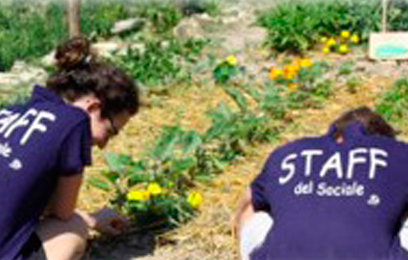

Courtyard animals are addicted to human presence and adequately educated can form an excellent basis for pet therapy, horse therapy or onotherapy, particularly relaxing for persons with consequences of stigma, trauma or stress.
Field crops, horticulture, officinal plants mostly performed as organic farming, and gardening, can be a rewarding, engaging and simple work experience to implement with persons having different kinds of intellectual impairment, symptoms of aging mental illnesses or difficulties in social inclusion.
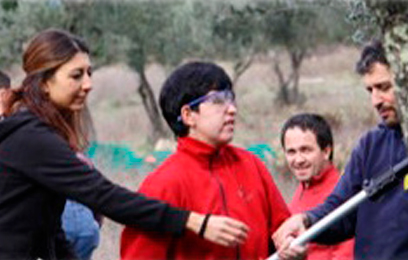

Food products, from the field to the table, also using traditional recipes can offer a double chance, an amazing training food lab activity and quality selfmade food products for the ethical market.
Agritourism consisting in accommodation, food and rural tourism services for tourists in rural areas can be also a strong point for a social farm, adding value to the training and employability for the persons with mental or social disorders, and to the incomes.
Relax and leisure areas are also very important spaces to be provided for trainees to give them a break from the work activities.
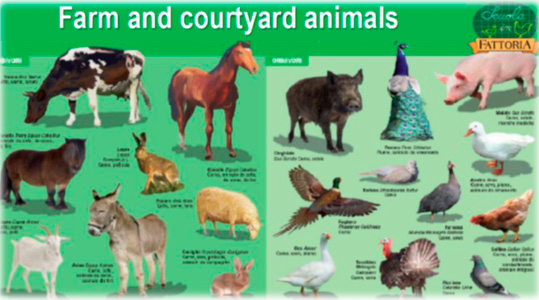 Farm animals are normally used for production rather than for therapeutic purposes, but they can be considered a special environment due to sound relationships between human and animal.
Farm animals are normally used for production rather than for therapeutic purposes, but they can be considered a special environment due to sound relationships between human and animal.
Animal farm environments offer different types of activities and interactions between people and animals compared to other agricultural settings.
The focus can be mostly on normal productive farm work, like feeding the animals, cleaning stables, milking the cows, etc.
This farm work holds however also a positive psychological effect since it has been demonstrated that interacting with animals performing these activities may also facilitate a social and communicative contact with the animals.
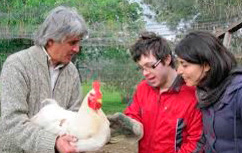 The progress should be measured with a follow-up of specialists adapting the work with flexibility depending on the day-by-day condition of the trainee.
The progress should be measured with a follow-up of specialists adapting the work with flexibility depending on the day-by-day condition of the trainee.
Animals can be particularly successful dealing with persons with different kinds of disabilities integrating the traditional health system with animal care, also called animal assisted activities (AAA) stimulating the animal assisted response.
Dogs or cats are commonly used as pets, but also courtyard animals, such as chickens, rabbits, horses and donkeys or less commonly Guinea pigs and alpacas can have a strong empathy with humans.
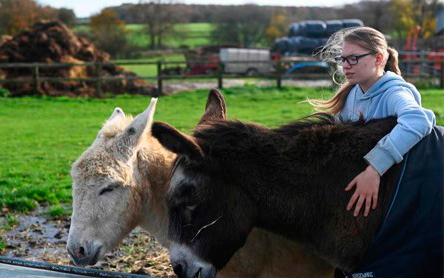
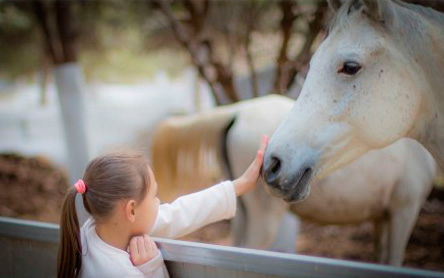
Unlike AAA, animal assisted therapies (AAT) are specialized psychological and psychiatric treatments managed and evaluated by specialists, with help of trained farm animals, that may reduce depression and anxiety, and increase self-confidence of persons with impairments.
Positive effects are documented in scientific literature for persons with mental and affective disorders or clinical depression, so that it’s useful for trainees with various impairments to perform exercises from simple to more complex in the management and interactive care of the animals.
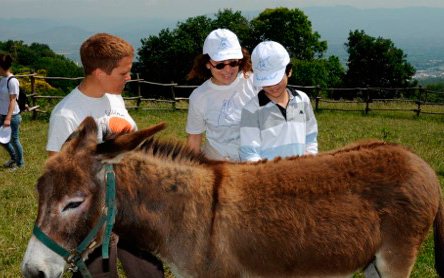
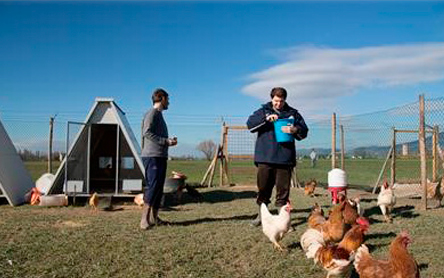
Persons with mental disabilities or social troubles can be attracted by interacting with farm animals as their contact is spontaneous and not subject to any kind of stigma as it can be with other persons.
The social farm should be adapted so that contacts and experiences with courtyard animals can be made in a safe and accessible context and develop self-confidence and a sound relationship with animals on the trainees for further interactions with them.
A safe work-place while taking care of farm animals is the right way to involve trainees with impairments.
Depending on the degree of learning and interest, the trainee will be stepby-step included in all main work activities with work sharing of the social farm tutor and follow-up of the educator.
One of the biggest emotional AAT benefits is the combined focus on the person with impairments and the animal and their relationship through mutual care.
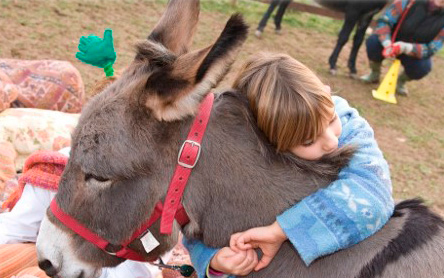
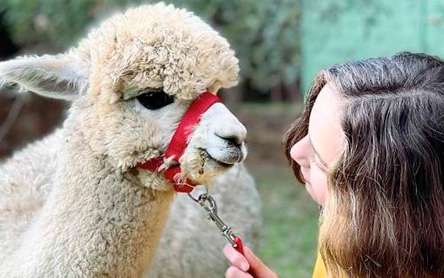
Advantages of AAT are:
- Enhance self-confidence, empathy and emotional stability
- Reduce stress, anxiety and feelings of isolation or loneliness
- Increase feelings of security, happiness, and positive mood.
A Portfolio of Evidence including pictures and videos, obviously released in respect of privacy, can be very useful to illustrate and evaluate the AAA and/or AAT available on farm.
The portfolio will be a constant reference of the individual report and offer a benchmarking of the different activities, their benefits and their possible adaptation depending on different kinds of mental disabilities or social troubles.
The social farm manager has the overall responsibility for animals’ care as well as for the inclusive and rehabilitative process addressed to the assisted trainees who will be involved in taking everyday care of animals with food, water, exercise and clean shelter.
Good hygiene and care are rules that should be applied involving the trainee as in a serious practical game, providing clean and drinkable water, good and enough feed based on animals’ nutritional needs, proper grooming and keeping the shelter and paddock clean.
If the animals are herd animals (like sheep, goats, alpacas, etc.) they will be at least two avoiding loneliness.
All this knowledge should be passed through learning-by-doing to the trainees making them part and responsible for animals’ care.
Field and greenhouse are privileged agricultural environments for social farm training activities.
Organic farming is the most suitable process having characteristics of natural crop treatments and enrichment of soil that ensure safety and quality to the produce.
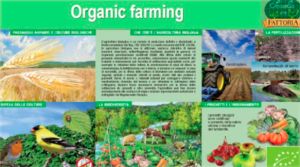 Organic farming can be performed in open field or also in greenhouse, but it’s fundamental in any case that it is clearly explained to the persons participating to the programs which are the steps and the tasks assigned and facilitate the learning-by-doing process.
Organic farming can be performed in open field or also in greenhouse, but it’s fundamental in any case that it is clearly explained to the persons participating to the programs which are the steps and the tasks assigned and facilitate the learning-by-doing process.
A plot of cultivations will be useful for the purpose to provide the trainee with a visual idea of the gardens and the orchards.
 The kitchen garden, vegetable field or the fruit orchard, will have a rational design with distinguished strips of land for each of the cultivated species and varieties, and cartels with picture and name of the plant, as well as the sequence of daily care, so that it will be easy for the trainee immediately to recognize the plant and keep it in memory to continue the work on the days after.
The kitchen garden, vegetable field or the fruit orchard, will have a rational design with distinguished strips of land for each of the cultivated species and varieties, and cartels with picture and name of the plant, as well as the sequence of daily care, so that it will be easy for the trainee immediately to recognize the plant and keep it in memory to continue the work on the days after.
 The kitchen garden is a farm corner where all herbs and vegetables used for food preparation are cultivated.
The kitchen garden is a farm corner where all herbs and vegetables used for food preparation are cultivated.
This can be managed by the trainee according to a program starting from the map of officinal and aromatic plants, and vegetables needed and their seasonal rotation.
The program management will be discussed and implemented with the trainees involved in work sharing, passing through work shadowing and following autonomous responsibilities.
A preparatory course with help of pictures on cartels will train to the kitchen garden seeding, plantation, cultivation and care.
The participation of the trainee will be encouraged since the beginning as a practical knowledge exercise from the vital cycle of plants up to their use for food preparation.
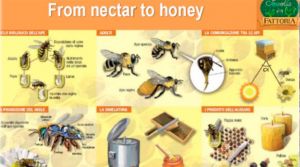 A «must» of a social farm is a laboratory of traditional food knowledge and tasting.
A «must» of a social farm is a laboratory of traditional food knowledge and tasting.
Food Laboratories, such as «from wheat to bread and noodles» and «from nectar to honey» can provide the trainees with a direct knowledge and experiences from the learningby-doing process.
The kind of food laboratory depends obviously on specific competences and abilities of the farm manager and staff involved, but also on kind of disabilities or social troubles and personal interest of the trainee.
The beekeeping activities can be disturbing i.e. as an environment for an person with autistic spectrum disorders, due to potential fear of the bees or unpredictable situations, but understanding of the importance of bees for pollination and the goodness and healthy characteristics of their products, honey, royal jelly, pollen, and so on, can be learned and also the autistic person could be proud to participate i.e. in the honey extraction and potting.
Made from cereals, and particularly from wheat flour, bread is the most widely consumed food in the world, and a part of human diet for thousands of years.
Home made noodles are also a tradition in many countries, mostly from durum wheat.
Bread and noodles can be easily made at farm in a home lab where the dough can be kneaded, and the bread baked in an oven, while the noodles, often made also by mixing flour and eggs, let dry a little before to be boiled.
There are a lot of recipes for bread and noodles depending on countries and regions, so a laboratory from cereals to bread and noodles can be set up at the social farm easily everywhere.



The magic of dough, making bread or noodles, is the involvement of persons with different kind of impairment, who can directly experiment these processes and be proud of their tangible results, bread or pasta that can be consumed all together.
This idea of community, from the field to the table, is very important for inclusion and rehabilitation.
A laboratory for making bread and pastry and noodles, is quite easy to set up in a social farm as an activity enabling persons with impairments to learn skills and abilities needed.
The indoor space chosen should be large enough to let persons working in a safe condition for work shadowing, considering at least three persons, the trainee, the tutor and the educator.
The bakery and pasta laboratory will be separated but close to the storage of ingredients, so that all the process will be easily understandable and kept in mind by the trainee, who is expected to be more and more confident with the work environment and operations.
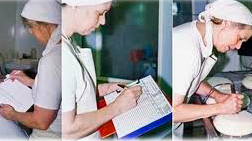 The hygienic rules (HACCP) will be the first step to be correctly understood and executed by the trainee and designed on posters to make easier a fast understanding of the sequences In the case of a production not just for internal use but also addressed to customers i.e. farmers’ and/or solidal markets additional issues will be packaging and food chain traceability.
The hygienic rules (HACCP) will be the first step to be correctly understood and executed by the trainee and designed on posters to make easier a fast understanding of the sequences In the case of a production not just for internal use but also addressed to customers i.e. farmers’ and/or solidal markets additional issues will be packaging and food chain traceability.
Animals always are an added value for a social farm, contributing to create a friendly environment mostly very comfortable for persons with impairments or social troubles.
 From the pastures to the fences, shelters and milking room the management of cows, sheep or goats can be very helpful for an inclusive and rehabilitative training process.
From the pastures to the fences, shelters and milking room the management of cows, sheep or goats can be very helpful for an inclusive and rehabilitative training process.
The all daily planning has to be clearly presented and developed sequencing the various activities from field to table but it should be important keep in mind that the objective is not just producing and learn the process techniques but also establish a good mood while working.
Hygiene is very important as a concept and practice to be learnt, i.e. before milking animals have to be carefully washed and their breasts dried.
These simple starting point can be fundamental to go on with a learning-by doing process centred on providing the trainee with soft and hard skills for the following activities.
Livestock producing milk can open a whole world to be discovered by looking, hearing, touching, smelling and tasting, so creating a kind of magic world for the trainee with impairments.
It can be recommended particularly for social farms holding a stable with cows, sheep or goats, and having cheese making as home production.
The process from milk to cheese is however more challenging compared to bakery and pasta, as it needs more specific technical knowledge and competence and more equipment with indoor dedicated spaces for the various production faces, where the hygiene is connected with seasoning, storage and shelf life arrangements.
Milk is a fundamental food for the growth of children and cheese is highly appreciated and popular in all countries. To become familiar with techniques and equipment for cheese making can be very useful for training purpose and give trainees an added value for employment opportunities.
The trainee will learn to touch and milk by hand gently as an exercise based on a friendly contact with the animal, but also the milking machine (milker) will be shown to make clear what is the modern way to milk and therefore something also important to learn.

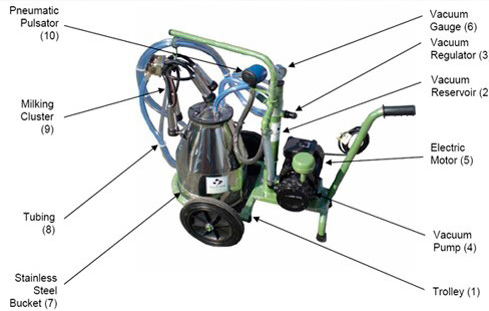
It is also important let the trainee understand that different animals make milk with different characteristics and taste.
The education to the taste is an important part of the learning process.
The laboratory, normally used to treat and process milk, butter and cheese, must be carefully checked according to food safety rules (HACCP, Hazard Analysis & Critical Control Points) but it can be adapted to perform practical workshops for trainees with impairments.
This concept is expressed by accessible spaces and equipment comfortable for the specific kinds of impairments.
Specific practices, as sterilization, pasteurization or use of raw milk for making cheese will be chosen depending on the destination of the milk and cheese and kinds of products made and, just in case, markets.
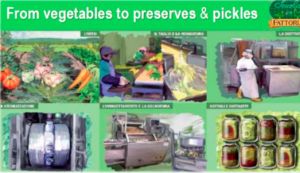 Very common food processes in all farms are preserves and jams, based on old recipes and useful to keep and eat vegetables and fruit after their seasonal production.
Very common food processes in all farms are preserves and jams, based on old recipes and useful to keep and eat vegetables and fruit after their seasonal production.
Despite the ease of producing preserves, it is fundamental to strictly respect the hygiene rules to be observed in all productive phases and let learn them by the trainees as a sequence.
From this point of view also all the rules to be observed, their sequence, and relevant hazard analysis control of critical points (HACCP), are excellent tests to verify skills and abilities of execution and learning.
The operations and gestures committed to the respect of the rules will provide the trainee with correct behaviours to be understood and repeated as useful learning exercises.
The aim is to empower learning attitude by mental and manual abilities improving the training background of the trainees within an inclusive and rehabilitative path.
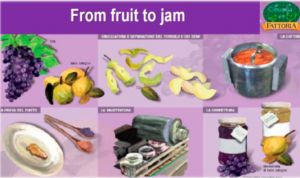 The main prescriptions for preserves and jams are:
The main prescriptions for preserves and jams are:
- pay attention to general cleanliness and personal hygiene.
- do not work in case of illnesses such as colds, flu or other contagious infections.
- wash hands regularly before and after handling products
- use clean, sanitized and sterilized containers
- regular cleaning of work surfaces and equipment before and after use
- regular cleaning of the processing room
- regular pest controls
All those prescriptions will be included in the gestures to be performed and repeated by the trainee in work sharing with the tutor and presented also in pictures sequencing the preserve and jam processing.

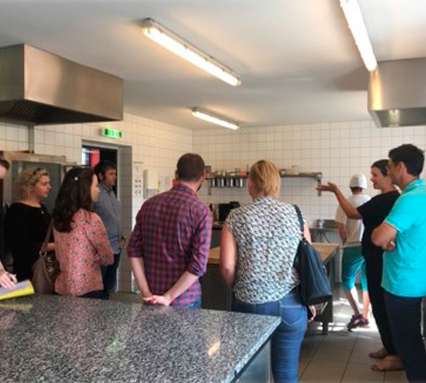
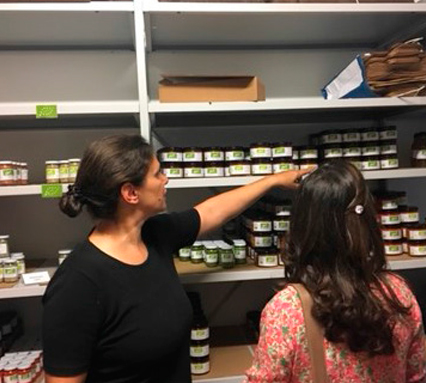
An important task of the social farm manager will be the adaptation of the processing room to:
- prevent accidents: i.e. regularly remove objects that are not needed for processing and provide storage space and suitable storage facilities (proper temperature and size, shelves, etc.).
- better accessibility of required materials/working utensils (keyword: barrier-free working)
- achieving a motivating and health-promoting working environment (e.g.: sufficient light; bright friendly colours; wheelchair or other kinds of accessibility adaptation)
- providing suitable storage facilities and storage space.
- processing rooms must be cleanable and “germ-free” (smooth and easyto-clean surfaces, avoidance of crevices, etc.)
Recipes must be traceable and, if possible, always the same.
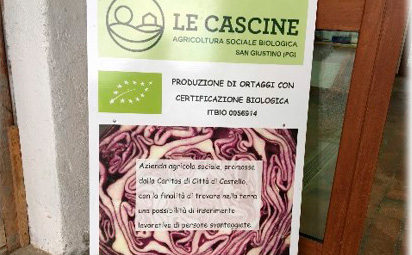
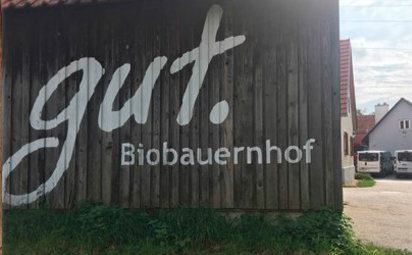
Labelling: labels may need to be created and printed, or let them print, for sales. Here below an example is given of a kind of label:
- name of the product, ingredients, calories and nutritional facts
- content in compliance with EU labelling for allergens
- logo of organic agriculture (if there is the certification), based on the new Regulation EU n° 2018/848 as executed by the Regulation EU n° 021/1165, and organic control body and number, and other additional details
- days of shelf lifetime after opening
- production batch number for traceability
- date for consumption
- address
- additional info, i.e. from social farming
Use and control of labels should be performed by the trainee in work sharing or shadowing with the social farm tutor.
It’s important that the whole process is understood by the trainee, from the recipe to the preparation, bottling of preserves and jams and labelling:
- boil down the products to be processed according to the recipe
- filling the sterilised jars/pots with the product, making sure that the processed product stick to the outside or the closure of the jar (clean away with alcohol if necessary)
- depending on the recipe, sterilise the preserved food again
- after filling, immediately close the jar with the lid and turn it upside down
- after the jars have cooled down, label (see labels) and put them away in the proper storage area.
Important precautions will be:
- clean and put away tools/materials no longer needed
- keep records of batch number, quantity, etc.
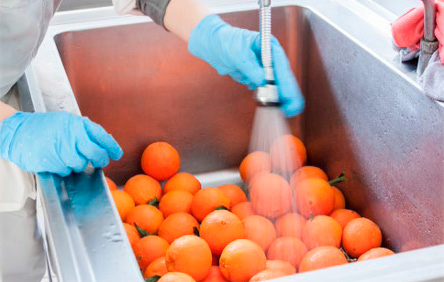

The development of the participant and the pedagogical path are in the foreground, while achieving certain batch quantities is not the primary goal.
Depending on their characteristics trainees should be trained first and then their work rhythm adapted to their own.
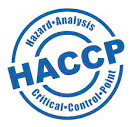 The communication on the work to be performed should be clear and trainees made aware of potential hazards, stimulating their individual perception.
The communication on the work to be performed should be clear and trainees made aware of potential hazards, stimulating their individual perception.
Depending on the recipe, the tools such as scales, cooking pot, plates, knives, cutting boards, sieves, drainers are prepared sanitized, with a warning on potential danger (i.e. sharp knives!)
The products to be processed, such as in the case of preserves or jams i.e. fruits or vegetables are prepared:
- washed, dried, weighed
- additives such as sugar, pectin, salt, spices, oil, etc. are fetched and weighed out.
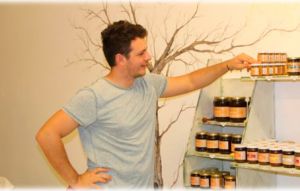 At the end of the preliminary training and starting with work sharing the trainee should be able to:
At the end of the preliminary training and starting with work sharing the trainee should be able to:
- know fruit/vegetables and recipe ingredients
- deal with quantities (weighing)
- demonstrate accuracy and concentration
- understand orientation and storage order
- be able to work hygienically
- recognise labels
- deal with aids (cooker, hand blender,etc.)
- tick the operations carried out on a block and add remarks if necessary.
 Extra-virgin olive oil (EVOO) is a fundamental ingredient of the Mediterranean diet listed in 2010 on the Representative List of the Intangible Cultural Heritage of Humanity.
Extra-virgin olive oil (EVOO) is a fundamental ingredient of the Mediterranean diet listed in 2010 on the Representative List of the Intangible Cultural Heritage of Humanity.
Extra-virgin olive oil is considered as a healthy dietary pattern that may reduce cardiovascular disease and type 2 diabetes due to its healthy compounds, as claimed by the European Food Safety Agency (EFSA).
There are in Mediterranean countries, where olive trees are traditionally grown, many examples of successful placement of persons with impairments, from the field to the mill, passing through all operations to obtain high quality EVOO.
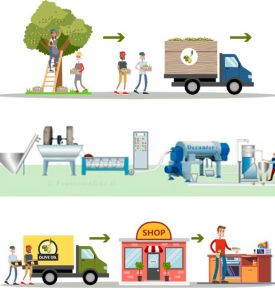 The olive grove is an ideal green context for persons with mental disabilities and social troubles, that can learn easily the main operations from pruning to harvesting, up to the production of a genuine and health olive oil.
The olive grove is an ideal green context for persons with mental disabilities and social troubles, that can learn easily the main operations from pruning to harvesting, up to the production of a genuine and health olive oil.
Many social farms offer therefore this opportunity to their trainees.
Most of the social farms with olive groves do not have an olive mill, but they often have a personalized packaging for EVOO from their own olives.
There are many opportunities then to place persons with disabilities along the production and sale chain.
There are successful experiences of job placement for persons with different kinds of disabilities in farms producing grapes and wines.
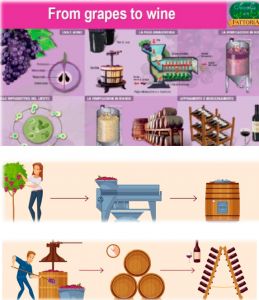 Making wine implies a high level of specific knowledge and skills but according to experiences made persons with different kinds of mental disabilities can be trained with good results all along the wine supply chain.
Making wine implies a high level of specific knowledge and skills but according to experiences made persons with different kinds of mental disabilities can be trained with good results all along the wine supply chain.
Significant improvements were observed with direct involvement in pruning and harvesting in the vineyard and controlling the cellar.
It is also remarkable the convenience for the wine producer as a fairtrade product with an attribution of compliance with the social ethic rules that can be certified.
Some social farms in the wine sector have also experienced the availability of
customers to support directly ethic and fairtrade products with communitybased
social funding.
The cycle from the grape to the wine is a traditional process which origins are rooted in the agricultural history of humanity.
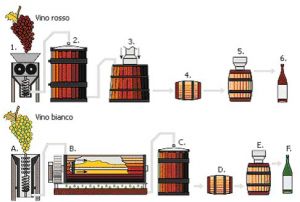 The progress made for the quality improvement have implemented techniques and technologies from the field to the cellar.
The progress made for the quality improvement have implemented techniques and technologies from the field to the cellar.
All the vine and grape vital phases, from flowering to fruit set in May/June, swelling in June/July, veraison at the end of July, sugar increase and ripening of the bunches in August/September, are important and pretend a continuous control, also depending on weather conditions.
The field care is a useful exercise to involve directly the trainees making them aware about the importance of all controls and interventions needed, up to the final operations of harvesting.
The chemical analyses bringing to the decision of harvesting can also be explained as a part of the technological process needed to produce a good quality wine.
The vinification process is followed in cellar under controlled environmental conditions for the transformations of sugar into alcohol and the composition and weight of acids, development of yeasts for the fermentation and aromatic compounds giving wine its characteristics.
In this phase the control can involve the trainee who can become more and more aware, careful and interested to this essential work.
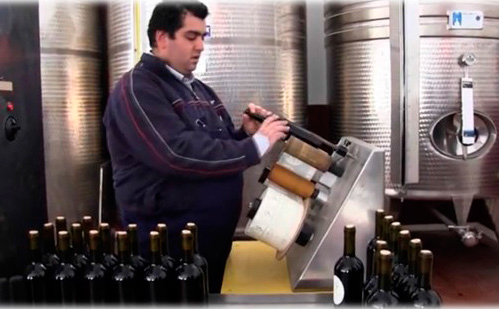

After the maturation and refinement of the wine, in different kinds of containers, normally stainless steel for maturation in an anaerobic environment and wooden barrels for refinement and aging, particularly for red wines, the trainee can be introduced to the next stage of bottling, marketing and selling.
Depending on kind of raw material, from cereals for beer, apple for cider, or fruit for different kinds of liqueurs, with different making processes, same step-by-step training is favourable to develop the soft and hard skills of trainees with different kinds of mental disabilities. 4.6 Managing a Social Farm Agritourism.
 Agriculture can be defined as multifunctional when it has one or several functions in addition to its primary role of producing food and fibres.
Agriculture can be defined as multifunctional when it has one or several functions in addition to its primary role of producing food and fibres.
Multifunctional agriculture can be imagined as a prism transforming a ray of white light into a multicolor beam.
The capacity of agriculture to be multifunctional allows farmers to obtain additional income by diversification of activities.
Agritourism is the most classic, sustainable and experienced kind of multifunctional farm diversification and can be strictly connected also to social farms providing accommodation and other kinds of agritourism services.
A social farm can include therefore accommodation for guests, restaurant and other services that can involve persons with different kinds of disabilities and train them to deal with tasks compatible with their interest, skills and adaptability.


Agritourism is an economic and cultural driver of rural development with a high added value also given by the recovery and restoration of traditional rural real estate properties.
This also includes the care of gardens, parks and paths as part of the agritourism spaces offered to customers.
Persons with different kinds of disabilities can be trained to keeping indoor and outdoor spaces as well as dealing with customers’ needs.
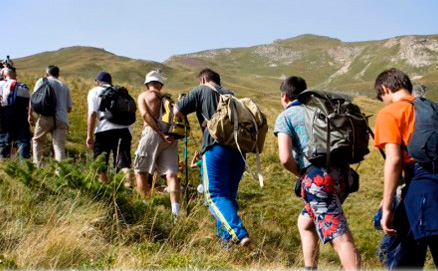

Even the description of a traditional dish to the customer can be perfectly learnt by the trainee as a story telling coming from the field to the kitchen through the tradition, rural and local food culture.
The educational path can be long but the results in terms of self-esteem and competence acquired can be amazing and durable.
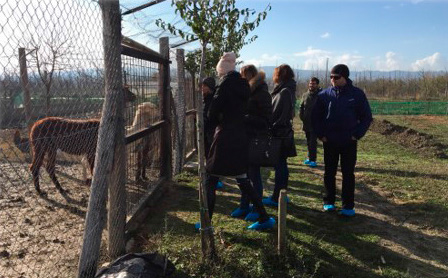
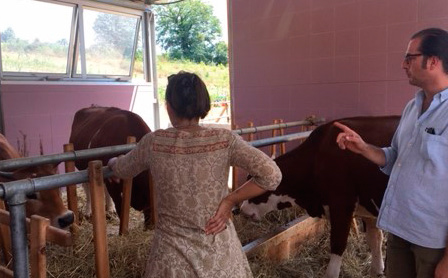
Farm animals, such as chickens, rabbits, sheep, goats, pigs, cows and calves, horses, donkeys, etc., are important for the rural environment and leisure time (such as horse riding), but also pet therapy and hippotherapy.
The social farm trainees are often very interested, successful and passionate of managing animals and give proudly when expert their advice to customers on how to deal with them.
This approach is very practical and effective for a learning-by-doing method but it should be tailored and measured step-by-step depending on kinds of persons.
Agritourism offers therefore a lot of opportunities for personalized rehabilitation paths of persons with various kinds of mental disabilities or social concerns and it is at the same time a good income opportunity for the social farm.
From the land can be collected also wood, clay, straw and textile fibres, natural materials that can be collected and used for creative handicraft in the care farm workshops, particularly in the fall and winter seasons when days begin to be more rainy and short and time can be spent and seized by working inside.
The workshop rooms have to be adapted according to universal design criteria with care for comfort and tranquility and focus on a scheduled program of activities depending of the trainee’s interest and ability.
Seats and materials have to be provided in quantity depending of number of participants and kinds of works planned.
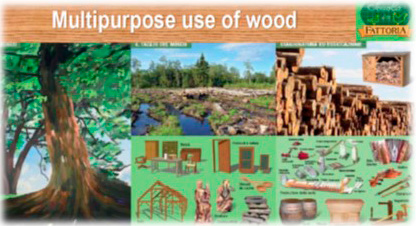
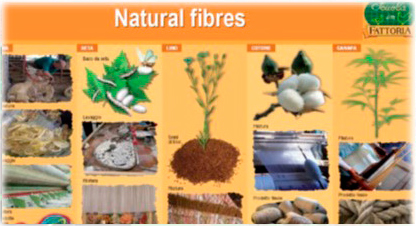
A care farm whole cycle will be planned within a calendar based on seasonality of indoor and outdoor activities with objectives and milestones combining parallel on field and workshop courses.
In case of availability of equines for hyppotherapy as a therapeutic treatment chosen by the family and under favorable opinion from the social and health services this activity will be also scheduled at the care farm according to seasonality and weather in the indoor or outdoor paddock and in the stable for animal keeping.
In a social farm even waste recycling can be a good way of learning useful environmental issues and a good practice of acting within a concept of circular economy.
Recycled materials can be used in agriculture to make compost mixing chopped biological residues from pruning or harvesting with animal sewage to fertilize and regenerate the soil.
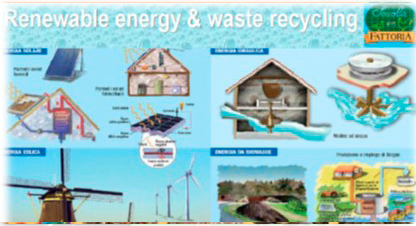

Some other materials can be recycled stimulating the phantasy of the trainees to make their creations from what can be picked up from broken tools and normally destinated to waste.
Renewable Energy Sources are also a field to be included in a responsible way of thinking that can be attractive for persons with impairment stimulating their sensistivity towards the environment and take care of this issue.
Renewable building materials can be a learning-by-doing successful course by participating to the creation of clay and straw panels for low impact farm buildings see https://www.youtube.com/watch?v=z8L4q6DJpQo&t=125s
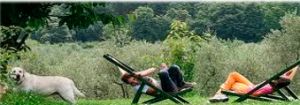 Rural areas are ideal environments for active tourism, and farmhouses can offer accommodation, catering and rest in indoor and outdoor spaces.
Rural areas are ideal environments for active tourism, and farmhouses can offer accommodation, catering and rest in indoor and outdoor spaces.
Some farmhouses provide wellness services, such as swimming pools and SPA, massages and wellness treatments for the body, but the most important services offered are outdoor activities.
Trekking, hiking, mountain biking, horseback riding are the most popular among this types of outdoor and recreational activities.

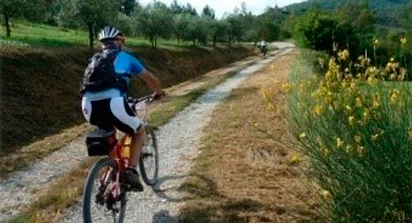
It is therefore important to provide customers with all the necessary information, services and assistance.
Persons with impairments can be trained to deal with information and note taking of the customers’ needs.
Indoor spaces are inspired to criteria of accessibility and relax for all.
Special design of spaces should favour hospitality for persons with disabilities and/or impairments and their families.
Bedrooms, living rooms, kithen, restaurant and bathrooms have to be based on universal design raccommendations, without limits to accessibility and offering individual rest rooms as well as common living spaces to be shared.
Indoor laboratories should be also designed thinking on special needs of guests with mental disabilities or limited mobility, so that they can find spaces adapted and comfortable for eveybody.
Meaningful pictures representing actions to be performed and recreating daily and familiar situations can be useful for persons with mental disorders reassuring their usual contexts.
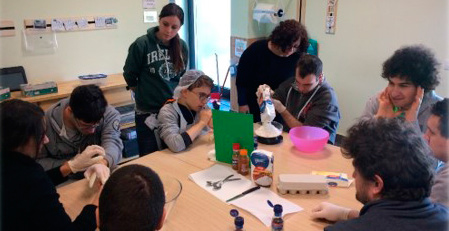
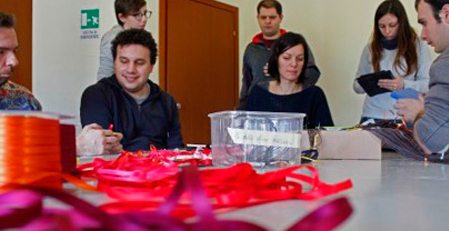
Indoor sport spaces are very important for leisure time and should be designed and equipped according to the same criteria of easy access and safe and friendly environment for all.
5. SOCIAL FARM WORK ASSESSMENT AND COMPETENCE BALANCE
The approach adopted (Pavoncello, 2018) sees Social Agriculture, through the implementation of best practices, not only as beneficial to local economic development, but also as a promoter of:
- Social inclusion of disadvantaged people
- Improvement of the quality of life through tailored pathways
To work efficiently, a Social Farm requires a manager that is capable of integrating, in such a complex and multidimensional reality, various specialized professions as a team where everyone practices and shares their expertise.
The Social Farm Manager ensures that all the activities implemented by the professionals within the Social Farm’s network are oriented towards the achievement of the same goals.
The success of a Social Farm Manager depends also on his capability of:
- being part of
- moving within
each subsystem that constitutes the Farm (Minuchin, 1974), as by listening, interpreting and moderating requests and difficulties coming from various subsystems, he/she also monitors the process towards achieving the set objectives.
A Social Farm is never an isolated context, but part of a larger integrated system (Bronfenbrenner, 1979) where exchanges occur constantly.
Hence the other major responsibility of the Social Farm Manager: the interaction and exchanges with the outside world where the Social Farm takes, but thanks to the best practices, also gives back something transformed for the better.
But how to evaluate a social farm efficiency and efficacy from a Social Farm Manager’s point of view?
The Social Farm is a well-known environment that hosts and involves people with different kinds of vulnerabilities: from cognitive, affective, interpersonal disabilities and disorders to socio-economic disadvantages.
It is of utmost importance in this context to offer a personal tailored path that considers, other than the impairment that affects the individual, their unique life history by engaging in a trustworthy relationship with the person directly involved, as much as with the network the individual is connected to.
According to the personal recovery approach (Anthony, 1993), improvement in quality of life is not solely realized with better clinical outcomes, but primarily as a deeply subjective experience of wellness that he or she perceives after a path, as a new way of being and with a new balance.
Quality of life, from this perspective, is defined by other constructs, for instance:
- mental well-being
- self-efficacy
- self-esteem
- sense of belonging
- decrease of negative emotions
To achieve these goals, it is important to design a recovery path that considers actual and potential capabilities, other than expectations and ambitions.
Even though the subject will need support and guidance, it is fundamental to identify the strengths, since they are the most important components of personal recovery. They work as a trigger for motivation, making the person believe that he or she is the protagonist of the improvement.
The evaluation of a personal recovery path appears as a process that starts with a working team of professionals sharing their skills and competences:
- Individual
- Family
- Social and Health services
- Social Farm personnel
to create an effective individualized tailored program based on the person’s needs. Then continues with a constant monitoring of the process through a systematic evaluation of strengths and difficulties along the path.
In this scenario it is very important that the Social Farm Manager is aware of every individual progress and ready, if needed, to reformulate it after a new evaluation made by the team he or she leads.
The recovery process that accompanies the individual along the social inclusion path, implies for its dynamic nature, an evolution of the person, encouraged by the interaction of external and internal factors.
The Social Farm Tutor is usually a farm’s employee as well as the Social Farm Educator can be, but the last one more frequently sent by a social cooperative or directly from the social/health services, both of them interacting with the trainees/users on a daily basis.
They work together inside the farm – with strength, creativity and courage (Zampetti & Sabatini Scalmati, 2014) – applying their specific knowledge and accomplishing different tasks, but it is the union of their competences and the common shared goals that encourages the development of the soft and hard skills of the individual.
Even if the exchange of opinions between different professional figures within the Social Farm remains one of the most effective practices to identify the best solution for each individual, the role of the Social Farm Educator is crucial.
The competences acquired through educational training in combination with the experience gained working with disadvantaged people, can guarantee successful outcomes.
Systematic encounters between Social Educators and Mental Health Professionals – such as Psychologists, Psychiatrists and Social Workers – are highly recommended as part of the program.
Scheduled comparisons are in fact useful for the person’s well-being as by combining their competences, they can build a very efficient and personal tailored pathway:
- Health Professionals with periodical assessments (e.g. interviews and tests)
- Social Educators with their educational skills (daily observation and interaction)
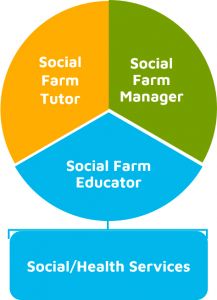 Social Farm Tutor and Social Farm Manager will constantly report the work in progress made with the trainee and the results achieved.
Social Farm Tutor and Social Farm Manager will constantly report the work in progress made with the trainee and the results achieved.
This ongoing evaluation has a crucial importance for testing the tailored social farm program and identify gaps, if any, and adjustments needed.
The evaluation process will be shared with the educator, the person assigned from the social cooperative or directly from the social/health service, in charge of assisting the care farm inclusion program of the trainee.
A weekly progress report will be shared with the social health services by providing psychiatrists and psychologists with all detailed information on work developed and benefits or troubles found during the placement.
This is a crucial point to have a correct evaluation that can be also used to plan more general programs implemented for specific categories of impairment or disorder and better focus on training needs.
Families are involved in all phases and in all relationships related to the placement and programs in the social farms, in collaboration with the employment and social/health services.
The social farm manager is therefore responsible also for this sensitive aspect in close collaboration with the social farm educator following-up the placement.
Although supported placement schemes can be initially expensive, they have made it possible for individuals who have never had a work, or had bad placement experiences, to find a well-balanced and friendly environment.
The social farm manager will have towards the families the role of reporting the progress made both in terms of adaptation to the new environment and persons met, and knowledge and skills acquired.
Families are also often organized in associations and contribute to spread the role of social farm as a better place where the rehabilitation can be combined with inclusion and self-esteem acquired by the trainees.
Meetings organized with the families and family associations are very important to establish good relationships and mutual confidence.
The social farm manager will present objectives and goals of the activities performed in collaboration with the social/health and employment services and will outline the future programs stimulating the discussions with the families and the trainees.
Individual meetings with the families will also be organized by the social farm manager focused on specific paths, potential problems to be tackled or special sessions suggested to meet the trainee’s needs, in collaboration with the social farm educator in charge of the individual activity reports and the tutor responsible to adapt the daily activities.
The social farm manager can act therefore as a junction point between families and social/health services along the rehabilitation path of the trainee.
Social farm manager can be defined as a person responsible for planning and managing a program of social agriculture.
Customer satisfaction measures how products or services provided meet expectation.
Empathy is the ability to understand and share the feelings of another.
Employment services are offices in charge of finding jobs for unemployed.
Gantt chart is a type of bar timetable that illustrates a project schedule.
Green care refers to natural environment favourable to care of people with special needs.
Learning-by-doing is an education methodology based on practical learning.
Special needs refer to educational requirements due to learning difficulties or disabilities.
Pet-therapy and hyppotherapy refer to Animal Assisted Therapies with pets or equines.
Portfolio of Evidence is a showcase of skills and task accomplishments.
Risk management is the forecasting and evaluation of potential risks together with the identification of procedures to avoid or minimize their impact.
Self-esteem is an overall subjective emotional evaluation of her/his own worth.
Social cooperatives are companies devoted to provide services and work for persons with special needs, such as persons with physical or mental handycaps or social troubles.
Social-health educator can be defined as an employee of the social-health services or cooperatives skilled in assistance to persons with special needs.
Social-health services are public units in charge of socail and medical assistance.
Social rehabilitation is a process aimed to include in the society disadvantaged persons.
Space enlargement is defined by psychiatrists and psychologists as the opportunity given to persons with social-health disorders to experience nonhospital contexts.
Universal design is the design of buildings, products or environments to make them accessible to all people, regardless of age, disability or other factors.
Vulnerable persons people with weak points or disadvantages.
Work-shadowing is a training experience based on performing a work
together and with supervision of a person holding full skills on a specific
professional competence
Anthony, W.A. (1993). Recovery from Mental Illness: The Guiding Vision of the Mental Health Service System in the 1990s, Psychosocial Rehabilitation Journal, 16(4), 11-23.
Berger, R. and McLeod, J. (2006) ‘Incorporating nature in therapy: a framework for practice’. Journal of Systemic Therapies.
Berget B. (2008) Animal assisted therapy: effects on persons with psychiatric disorders working with farm animals. Ass: University of Life Sciences of Ass, Noorwegen.
Bronfenbrenner U. (1979), Ecologia dello sviluppo umano. Tr. It. Il Mulino. Bologna, 1986.
De Rosa M., McElweeb G., Smith R. (2019) Farm diversification strategies in response to rural policy: a case from rural Italy.
De Vries, S., R.A. Verheij, P.P. Groenewegen & P. Spreeuwenberg (2003) Natural environments, healthy environments? An exploratory analysis of the relationship between green space and health. Environment and Planning.
Giare F., De Vivo C., Ascani M., Muscas F. (2018) L’agricoltura sociale: un modello di welfare generativo.
Hassink J., Grin J., Hulsink W. (2013) Multifunctional Agriculture Meets Health Care: Applying the Multi-Level Transition Sciences Perspective to Care Farming in the Netherlands.
Hassink J. et al. (2016) Entrepreneurship in agriculture and healthcare: different entry strategies of care farmers, Journal of rural studies, Elsevier.
Hassink J., De Bruin S., Berget B., Elings M. (2017) Exploring the Role of Farm Animals in Providing Care at Care Farms.
Kendall, K.S. & M.B. Kenkel (1989) Social exchange in the natural helping interaction. Journal of Rural Community Psychology.
Minuchin S. (1974), Families and Family Therapy, Harvard University Press, Cambridge (MD)
Nicolosi A. ,Laganà V.R., Di Gregorio D., Privitera D. (2021) Social Farming in the Virtuous System of the Circular Economy. An Exploratory Research.
Pavoncello D. (a cura di) Agricoltura Sociale: un laboratorio di inclusione per le persone con disabilità. INAPP Public Policy Innovation. Ministero del Lavoro e delle Politiche Sociali.
Zampetti A., Sabatini Scalmati P. (2014), Agricoltura sociale e progettazione educativa. La costruzione di percorsi destrutturati in contesti agricoli multifunzionali. In Orientamenti Pedagogici. Vol. 61, n. 3, Luglio 2014 (pp. 585-602). Edizioni Erickson-Trento.
Torquati B., Tittarelli A., Vizioli V., Paffarini C. (Ali&no 2018) L’Agricoltura si eleva al quadrato.
Social farming in Austria https://www.greencare.at/
Social farming in Italy https://www.forumagricolturasociale.it/
Social farming in the Netherlands https://www.zorgboeren.nl/
Social farming in Spain https://socialfarmingspain.wordpress.com/
Social farming in Turkey https://www.rehabilitasyon.com/
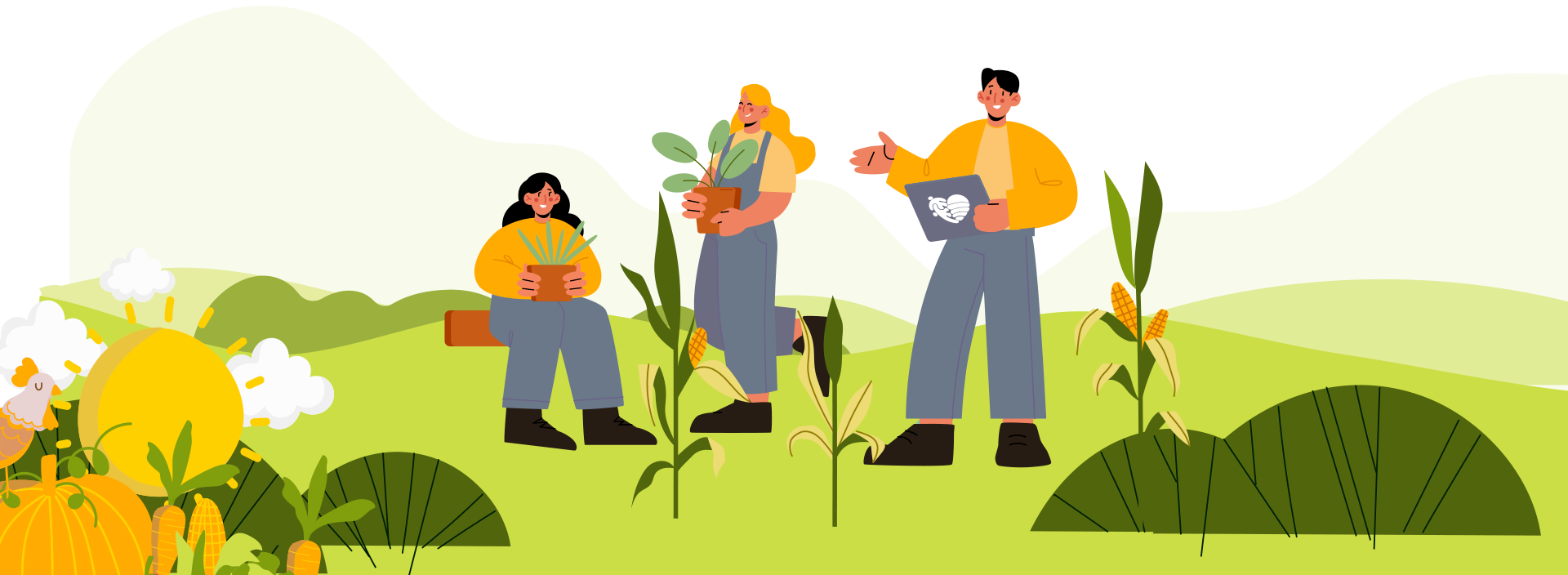
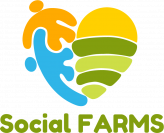
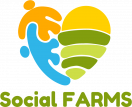
 BACK TO MODULES
BACK TO MODULES